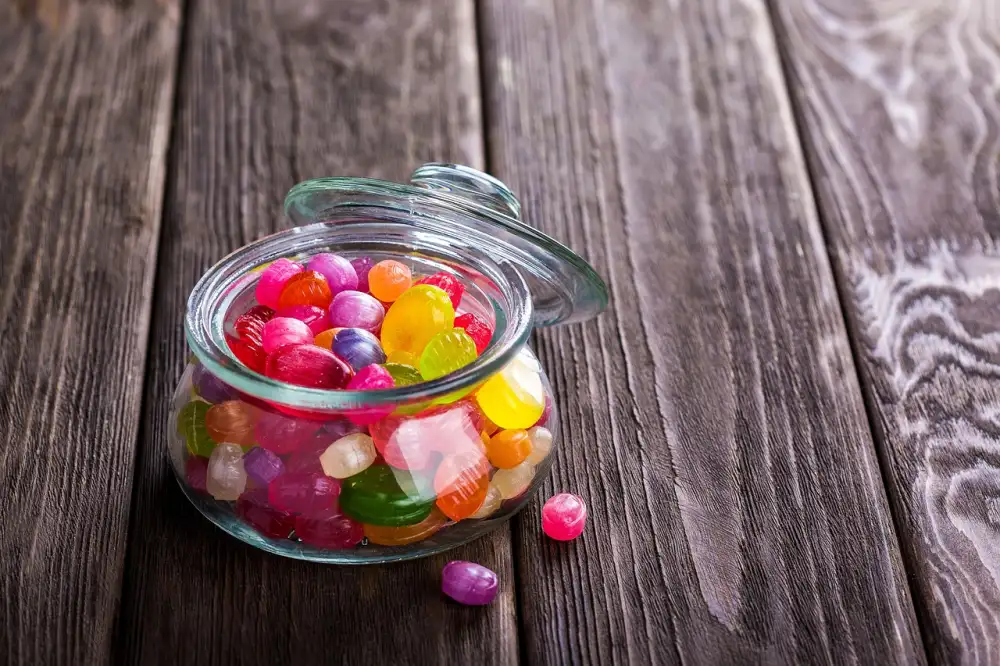Keep Your Fruits and Veggies Fresh: Discover the Best Fridge Containers for Optimal Storage

- Importance of Proper Storage for Fruits and Vegetables
- Benefits of Using Dedicated Containers for Fridge Storage
- Features to Look for in Fruit and Veggie Containers
- Types of Containers Available for Fridge Storage
- Tips for Organizing Fridge with Fruit and Veggie Containers
- Best Practices for Extending Shelf Life of Fruits and Vegetables
Proper storage of fruits and vegetables is essential to maintain their freshness and nutritional value. One way to achieve this is by using dedicated containers specifically designed for fridge storage. These containers are specially crafted to provide the ideal environment for fruits and vegetables, ensuring they stay fresh for longer periods.
By investing in the right fruit and veggie containers, you can extend the shelf life of your produce, reduce food waste, and ultimately save money. In this article, we will explore the importance of proper storage for fruits and vegetables, the benefits of using dedicated containers, the features to look for when choosing a container, different types of containers available, tips for organizing your fridge with these containers, and best practices for extending the shelf life of your produce. So let's dive in and discover how these containers can revolutionize your fridge storage!
Importance of Proper Storage for Fruits and Vegetables
Proper storage of fruits and vegetables is essential to maintain their freshness and nutritional value. When stored incorrectly, these perishable items can quickly spoil, leading to food waste and financial loss. Additionally, improper storage can result in a loss of flavor, texture, and color. By understanding the importance of proper storage, you can extend the shelf life of your produce and reduce food waste.
Benefits of Using Dedicated Containers for Fridge Storage
Using dedicated containers for fridge storage offers several benefits that can help keep your fruits and vegetables fresh for longer periods. Firstly, these containers provide a controlled environment that helps regulate temperature and humidity levels, which are crucial for preserving the quality of produce. Secondly, they prevent cross-contamination between different types of fruits and vegetables, ensuring that their flavors and aromas remain intact. Additionally, these containers are designed to maximize space utilization, allowing you to store more produce in an organized manner. By using dedicated containers for fridge storage, you can extend the shelf life of your fruits and vegetables while reducing food waste.
Features to Look for in Fruit and Veggie Containers
When choosing fruit and veggie containers for your fridge, there are several key features to look for. Firstly, opt for containers that have adjustable vents or air circulation systems. This allows for proper airflow and prevents moisture buildup, which can lead to spoilage. Secondly, choose containers with transparent lids or clear sides so you can easily see the contents without having to open them. This helps to minimize unnecessary exposure to air and maintain freshness. Additionally, look for containers that are BPA-free and made from food-grade materials to ensure the safety of your produce. Lastly, consider containers with dividers or compartments to separate different types of fruits and vegetables, preventing cross-contamination and preserving their individual flavors and aromas. By selecting containers with these features, you can maximize the shelf life of your fruits and veggies and keep them fresh for longer periods of time.
Types of Containers Available for Fridge Storage
When it comes to storing fruits and vegetables in the fridge, there are several types of containers available that can help maintain their freshness. One popular option is clear plastic containers with tight-fitting lids. These containers allow you to see what's inside without having to open them, reducing the risk of exposure to air and moisture.
Another option is mesh bags or perforated plastic bags. These bags allow for proper airflow, preventing condensation and mold growth. They are especially great for storing leafy greens and delicate fruits like berries.
For those who prefer a more eco-friendly option, there are also reusable silicone food storage bags. These bags are airtight and can be easily washed and reused, reducing waste from disposable plastic bags.
Glass containers with airtight seals are another excellent choice for fridge storage. Glass helps to maintain the freshness of fruits and vegetables while also being safe for use in the microwave or oven.
Lastly, produce-specific containers are designed with compartments or dividers to keep different types of fruits and vegetables separate. This prevents cross-contamination and helps preserve their individual flavors and textures.
When choosing a container for fridge storage, opt for BPA-free materials that are dishwasher-safe for easy cleaning. Additionally, look for containers that have adjustable vents or humidity control features to create an optimal environment for specific types of produce.
By investing in the right type of container for your fruits and vegetables, you can extend their shelf life significantly while keeping them organized and easily accessible in your fridge.
Tips for Organizing Fridge with Fruit and Veggie Containers
When organizing your fridge with fruit and veggie containers, it's important to follow a few tips for optimal storage. First, separate fruits from vegetables as they have different storage requirements. Fruits produce ethylene gas which can cause vegetables to spoil faster. Next, keep similar types of fruits and vegetables together to make it easier to find what you need. Additionally, label your containers with the contents and date of storage to track freshness. Lastly, regularly clean out your containers and discard any spoiled or overripe produce to prevent the spread of bacteria. By following these tips, you can ensure that your fruits and vegetables stay fresh for longer periods in the fridge.
Best Practices for Extending Shelf Life of Fruits and Vegetables
1. Store fruits and vegetables separately: Fruits release ethylene gas, which speeds up the ripening process of vegetables. To prevent premature spoilage, store them in separate containers.
2. Keep produce dry: Moisture can lead to mold growth and spoilage. Before storing, make sure fruits and vegetables are dry to extend their shelf life.
3. Check for bruised or damaged items: Remove any bruised or damaged fruits and vegetables from the batch as they can accelerate spoilage of other produce.
4. Avoid washing before storage: Washing fruits and vegetables before storing can introduce moisture, leading to faster decay. Instead, wash them just before consumption.
5. Use breathable containers: Opt for containers with ventilation holes or perforations that allow air circulation, preventing moisture buildup and extending freshness.
6. Maintain proper temperature: Most fruits and vegetables thrive in temperatures between 32-40°F (0-4°C). Ensure your fridge is set at the optimal temperature to preserve their quality.
7. Don't overcrowd the containers: Overcrowding restricts airflow, causing produce to deteriorate quickly. Leave enough space between items for better preservation.
8. Rotate your stock: When adding new produce to your fridge, place it behind older ones so that you consume the older items first, reducing waste.
By following these best practices, you can extend the shelf life of your fruits and vegetables, reduce food waste, and enjoy fresh produce for longer periods.
Investing in dedicated containers for fridge storage is a smart choice to keep your fruits and vegetables fresh for longer periods. By providing optimal conditions, these containers help maintain the quality, flavor, and nutritional value of your produce while reducing food waste.
Proper storage is crucial as it prevents premature spoilage and extends the shelf life of fruits and vegetables. Using dedicated containers helps regulate humidity levels, control airflow, and protect delicate produce from bruising or crushing.
When choosing fruit and veggie containers, look for features like adjustable vents, stackable designs, and clear visibility to easily identify contents. These features ensure maximum freshness by allowing proper air circulation while optimizing space utilization.
There are various types of containers available, including plastic bins with dividers for organizing different types of produce, stackable baskets with perforations for proper ventilation, and specialized containers with moisture control technology.
Organizing your fridge using these containers is simple. Group similar items together in separate compartments to avoid cross-contamination. Label each container to easily locate specific fruits or vegetables when needed.
To further extend the shelf life of your produce, follow best practices such as washing before storing, removing any damaged pieces, and storing ethylene-producing fruits separately from ethylene-sensitive ones.
In conclusion, using fruit and veggie containers designed specifically for fridge storage is an effective way to enhance freshness and reduce food waste. By investing in these containers and following proper storage techniques, you can enjoy longer-lasting produce while minimizing unnecessary waste. So go ahead, make the most out of your fruits and veggies by keeping them fresh in dedicated fridge containers!
Published: 07. 03. 2024
Category: Home



